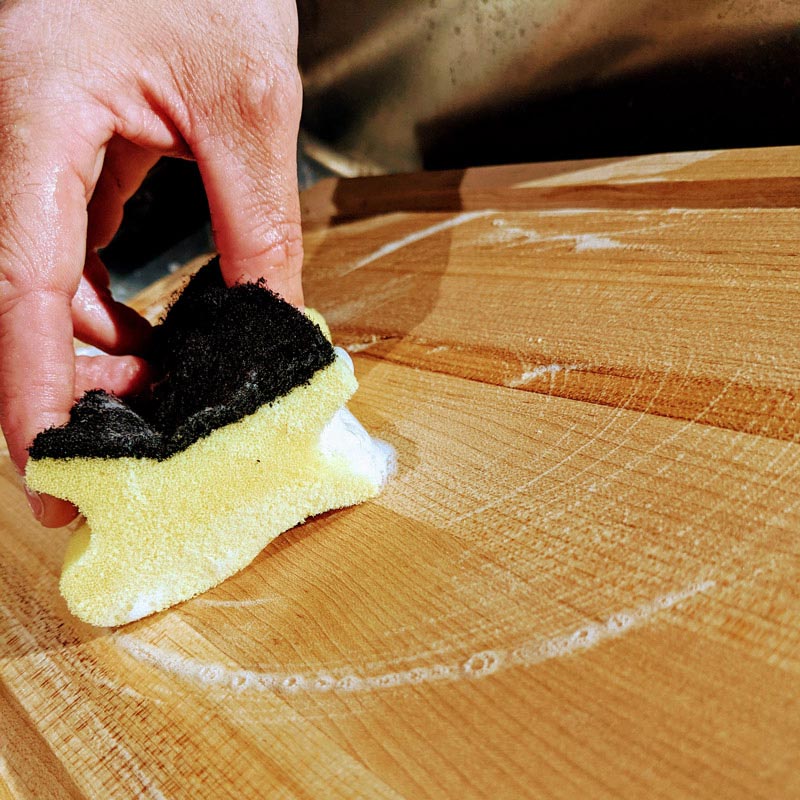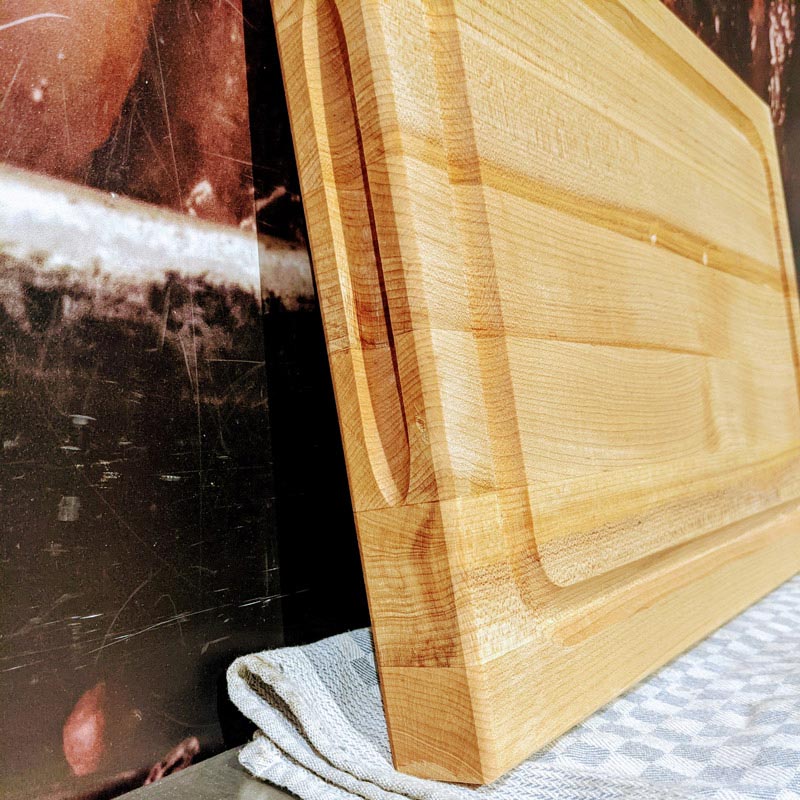Care Instructions for Wooden Cutting Boards
At Butch Shop, you will find a wide selection of cutting boards, butcher blocks, and serving boards made of wood.
Our brand manufacturers like Boos Blocks, Jack & Lucy, and Noyer use only high-quality woods for production and guarantee you – with proper use and correct care – long-lasting, if not lifelong, enjoyment of your cutting board. However, even the best type of wood is a natural product and therefore needs a little attention.
Cleaning
The most important no-go first: Wooden boards must NOT go in the dishwasher. No wood can withstand being exposed to hot water, steam, and aggressive cleaning agents for the duration of a dishwasher cycle. The wood would swell, warp, and make it impossible to work with. The same applies to the sink: Please do NOT soak the board.
For cleaning, we advise you to rinse the board under running hot water and clean it with a sponge and mild dish soap. Non-scratching scouring pads suitable for delicate surfaces like glass are allowed. If your cutting board already shows deeper cut grooves from frequent use, a brush is advisable. Please do not use steel wool or stainless steel pot cleaners!

The Drying
After cleaning, dry your cutting board with a dish towel and let it air dry completely. It is best to stand the board upright on a dish towel. Proper drying after cleaning is immensely important, as otherwise unsightly stains or even mold can form. Additionally, the "self-cleaning" by the tannic acid cannot begin on damp boards.
For this purpose, brands like Noyer already include a small wooden stand in the delivery. Some also use the stand for decorative presentation of the wooden board in the kitchen.











